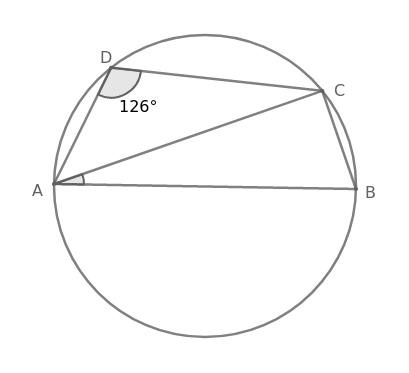ABCD is a cyclic quadrilateral such that AB is a diameter of the circle circumscribing it and $$\angle$$ADC = 126$$^\circ$$. $$\angle$$BAC is equal to:
Solution

In cyclic quadrilateral ABCD, sum of opposite angles = 180$$^\circ$$
$$=$$> $$\angle$$ADC + $$\angle$$ABC = 180$$^\circ$$
$$=$$> 126$$^\circ$$ + $$\angle$$ABC = 180$$^\circ$$
$$=$$> $$\angle$$ABC = 54$$^\circ$$
Angle subtended by diameter in a semicircle is 90$$^\circ$$
$$=$$> $$\angle$$ACB = 90$$^\circ$$
In $$\triangle\ $$ACB,
$$\angle$$BAC + $$\angle$$ACB + $$\angle$$ABC = 180$$^\circ$$
$$=$$> $$\angle$$BAC + 90$$^\circ$$ + 54$$^\circ$$ = 180$$^\circ$$
$$=$$> $$\angle$$BAC + 144$$^\circ$$ = 180$$^\circ$$
$$=$$> $$\angle$$BAC = 36$$^\circ$$
Hence, the correct answer is Option D
Create a FREE account and get:
- Free SSC Study Material - 18000 Questions
- 230+ SSC previous papers with solutions PDF
- 100+ SSC Online Tests for Free

